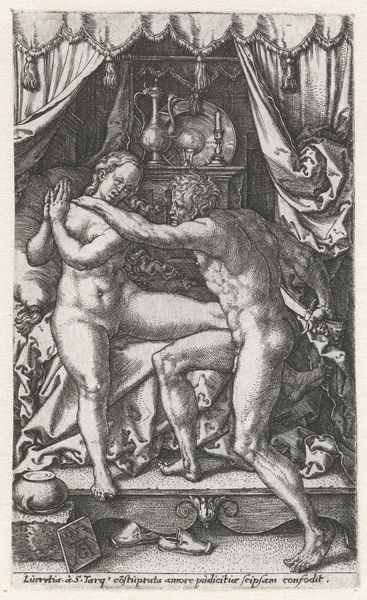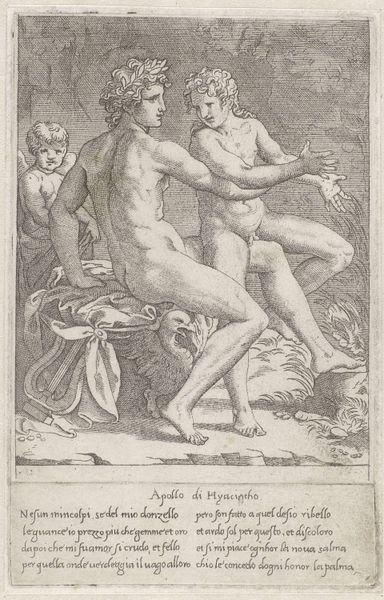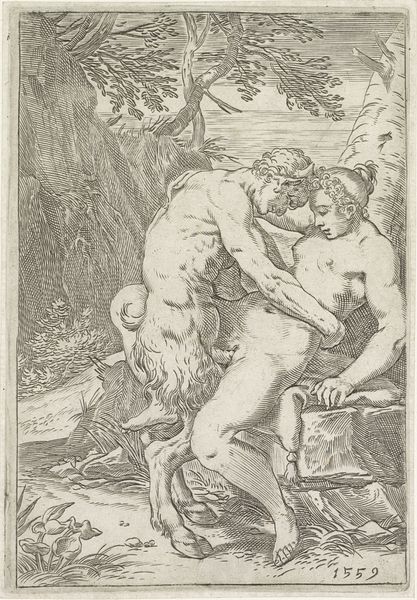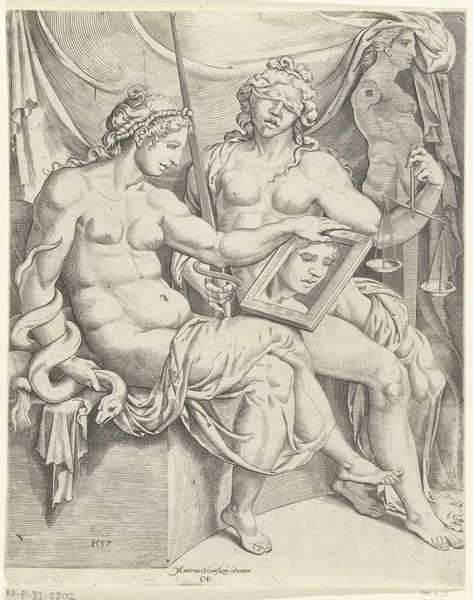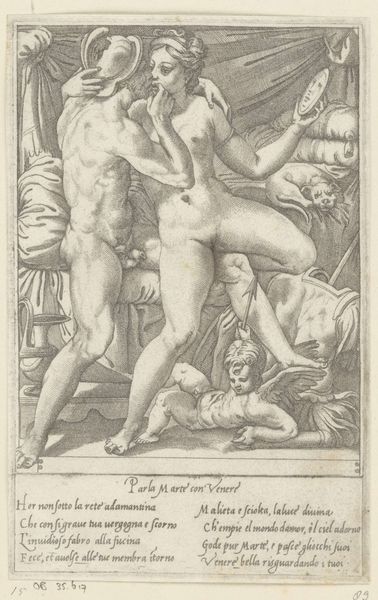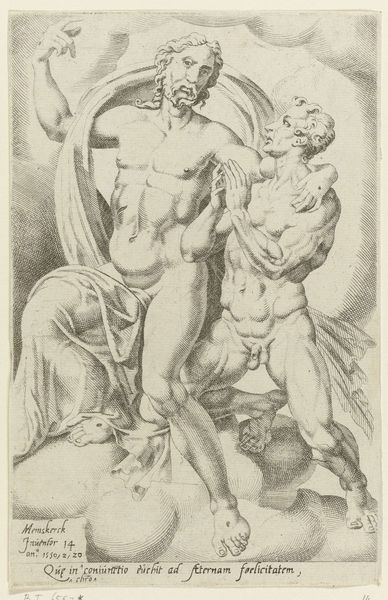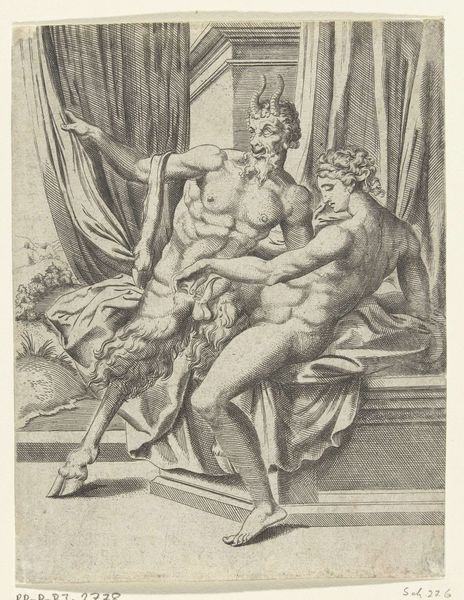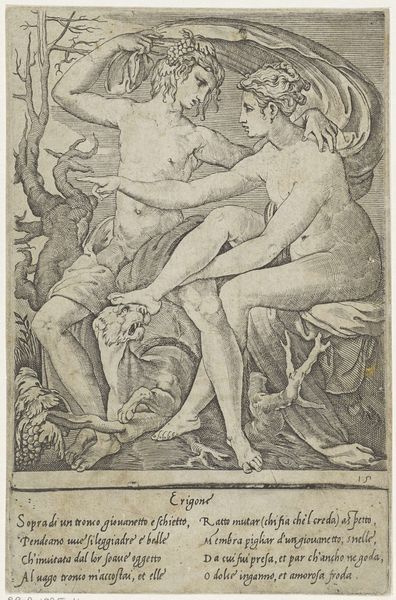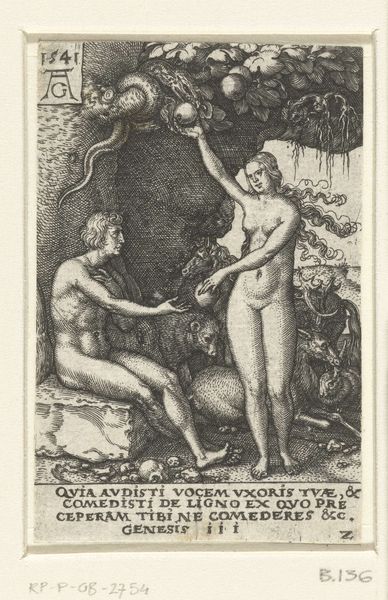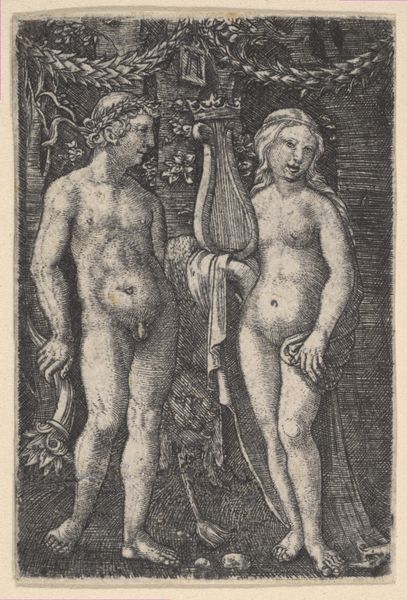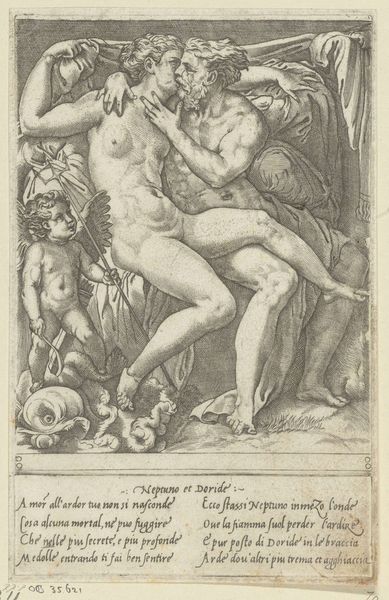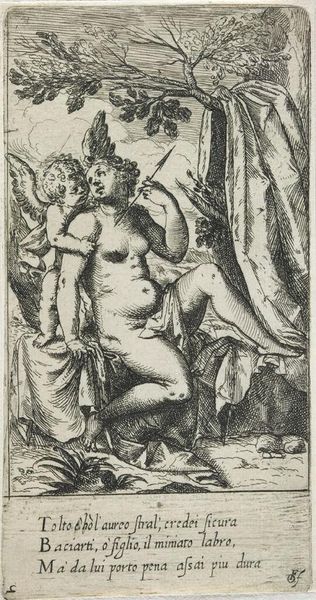
engraving
#
old engraving style
#
figuration
#
line
#
history-painting
#
northern-renaissance
#
nude
#
engraving
Dimensions: height 118 mm, width 77 mm
Copyright: Rijks Museum: Open Domain
Heinrich Aldegrever made this small print, “Lucretia and Sextus Tarquinius,” in 1539, using the intaglio process of engraving. This technique involves cutting lines directly into a metal plate, which is then inked and printed. Aldegrever was a “Little Master,” one of a group of German printmakers known for their small-scale, highly detailed works. These prints, made from copper, circulated widely and became a vital way to spread imagery and ideas during the Reformation. Look closely, and you can see the dense network of lines that define the figures and create a sense of depth. The stark contrast between light and shadow amplifies the drama of the scene. Printmaking in the 16th century was a skilled craft, requiring meticulous labor and technical expertise. The relatively small size of these prints meant that they were affordable and accessible, bringing art into the homes of a broader audience. By embracing the medium of print, Aldegrever challenged traditional notions of artistic value, demonstrating that powerful and meaningful art could be created through accessible means.
Comments
No comments
Be the first to comment and join the conversation on the ultimate creative platform.
